Formation of C-C Bonds via Catalytic Hydrogenation and Transfer Hydrogenation: Vinylation, Allylation, and Enolate Addition of Carbonyl Compounds and Imines
- PMID: 22403445
- PMCID: PMC3295582
Formation of C-C Bonds via Catalytic Hydrogenation and Transfer Hydrogenation: Vinylation, Allylation, and Enolate Addition of Carbonyl Compounds and Imines
Figures





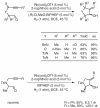
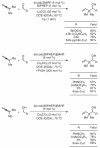


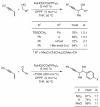

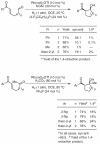
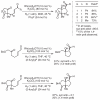
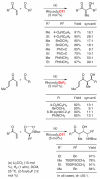
Similar articles
-
Alkyne-aldehyde reductive C-C coupling through ruthenium-catalyzed transfer hydrogenation: direct regio- and stereoselective carbonyl vinylation to form trisubstituted allylic alcohols in the absence of premetallated reagents.Chemistry. 2011 Oct 24;17(44):12437-43. doi: 10.1002/chem.201101554. Epub 2011 Sep 27. Chemistry. 2011. PMID: 21953608 Free PMC article.
-
Formation of C-C Bonds via Iridium-Catalyzed Hydrogenation and Transfer Hydrogenation.Top Organomet Chem. 2011 Jan 1;34(2011):107-138. doi: 10.1007/978-3-642-15334-1_5. Top Organomet Chem. 2011. PMID: 21822399 Free PMC article.
-
Formation of C-C Bonds via Ruthenium Catalyzed Transfer Hydrogenation: Carbonyl Addition from the Alcohol or Aldehyde Oxidation Level.Chem Lett. 2008;37(11):1102-1107. doi: 10.1246/cl.2008.1102. Chem Lett. 2008. PMID: 21927534 Free PMC article.
-
Catalytic carbonyl addition through transfer hydrogenation: a departure from preformed organometallic reagents.Angew Chem Int Ed Engl. 2009;48(1):34-46. doi: 10.1002/anie.200802938. Angew Chem Int Ed Engl. 2009. PMID: 19040235 Free PMC article. Review.
-
Enantioselective iridium-catalyzed carbonyl allylation from the alcohol oxidation level via transfer hydrogenation: minimizing pre-activation for synthetic efficiency.Chem Commun (Camb). 2009 Dec 21;(47):7278-87. doi: 10.1039/b917243m. Epub 2009 Oct 16. Chem Commun (Camb). 2009. PMID: 20024203 Free PMC article. Review.
Cited by
-
Iridium-catalyzed anti-diastereo- and enantioselective carbonyl (trimethylsilyl)allylation from the alcohol or aldehyde oxidation level.J Am Chem Soc. 2010 Jul 7;132(26):9153-6. doi: 10.1021/ja103299f. J Am Chem Soc. 2010. PMID: 20540509 Free PMC article.
-
Iridium Catalyzed Hydro-hydroxyalkylation of Butadiene: Carbonyl Crotylation.Adv Synth Catal. 2010 Oct 4;352(14-15):2416-2420. doi: 10.1002/adsc.201000599. Adv Synth Catal. 2010. PMID: 21165157 Free PMC article.
-
Total synthesis of cyanolide A in the absence of protecting groups, chiral auxiliaries, or premetalated carbon nucleophiles.Angew Chem Int Ed Engl. 2013 Apr 15;52(16):4470-3. doi: 10.1002/anie.201300843. Epub 2013 Mar 11. Angew Chem Int Ed Engl. 2013. PMID: 23495211 Free PMC article. No abstract available.
-
Enhanced anti-diastereo- and enantioselectivity in alcohol-mediated carbonyl crotylation using an isolable single component iridium catalyst.J Org Chem. 2011 Apr 1;76(7):2350-4. doi: 10.1021/jo200068q. Epub 2011 Mar 4. J Org Chem. 2011. PMID: 21375283 Free PMC article.
-
Alkyne-aldehyde reductive C-C coupling through ruthenium-catalyzed transfer hydrogenation: direct regio- and stereoselective carbonyl vinylation to form trisubstituted allylic alcohols in the absence of premetallated reagents.Chemistry. 2011 Oct 24;17(44):12437-43. doi: 10.1002/chem.201101554. Epub 2011 Sep 27. Chemistry. 2011. PMID: 21953608 Free PMC article.
References
-
-
For reviews, see: Trost BM. Science. 1991;254:1471. Trost BM. Angew. Chem., Int. Ed. Engl. 1995;34:259.
-
-
- Wender PA, Miller BL. Org. Synth. Theor. Appl. 1993;2:27.
- Wender PA, Handy S, Wright DL. Chem. Ind. 1997:767.
-
- Sheldon RA. Chem. Ind. 1997:12.
- Sheldon RA. Green Chem. 2007;9:1273.
-
- Nobel Foundation . Nobel Lectures, Chemistry, 1901–1921. Elsevier; Amsterdam: 1966.
-
- Smil V. Enriching the Earth: Fritz Haber, Carl Bosch, and the Transformation of World Food Production. MIT Press; Cambridge, MA: 2004.
Grants and funding
LinkOut - more resources
Full Text Sources
